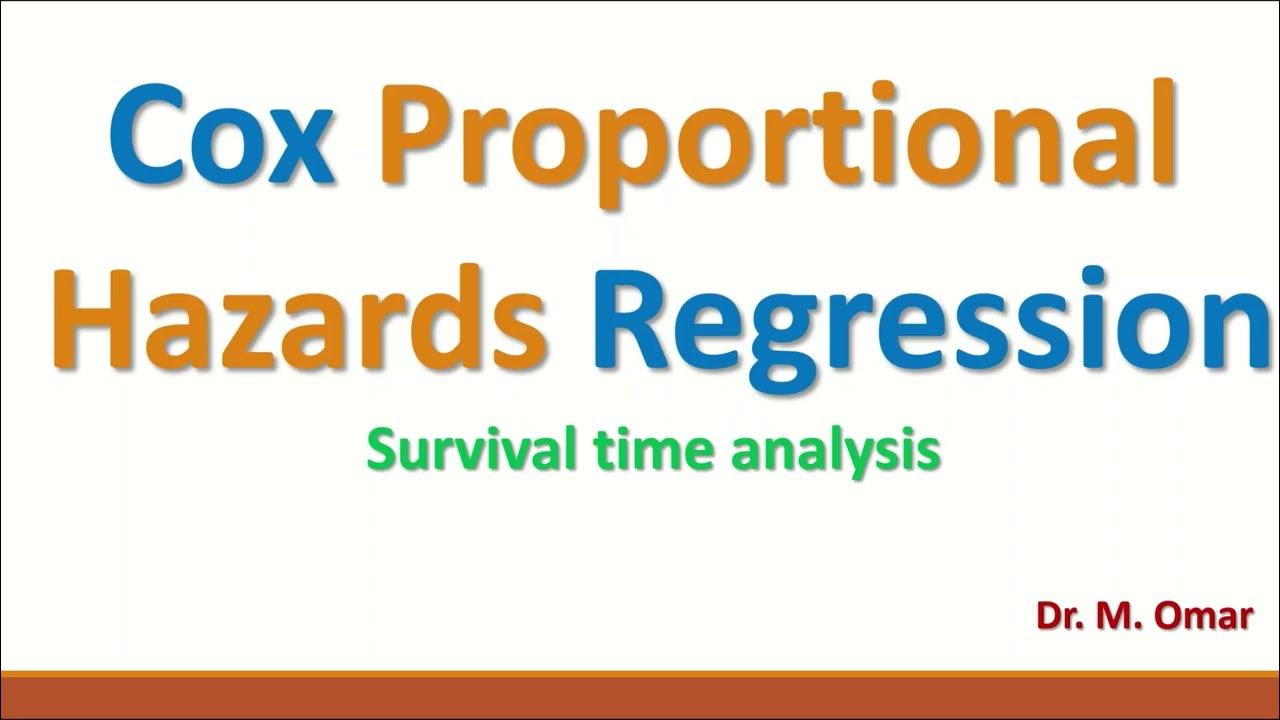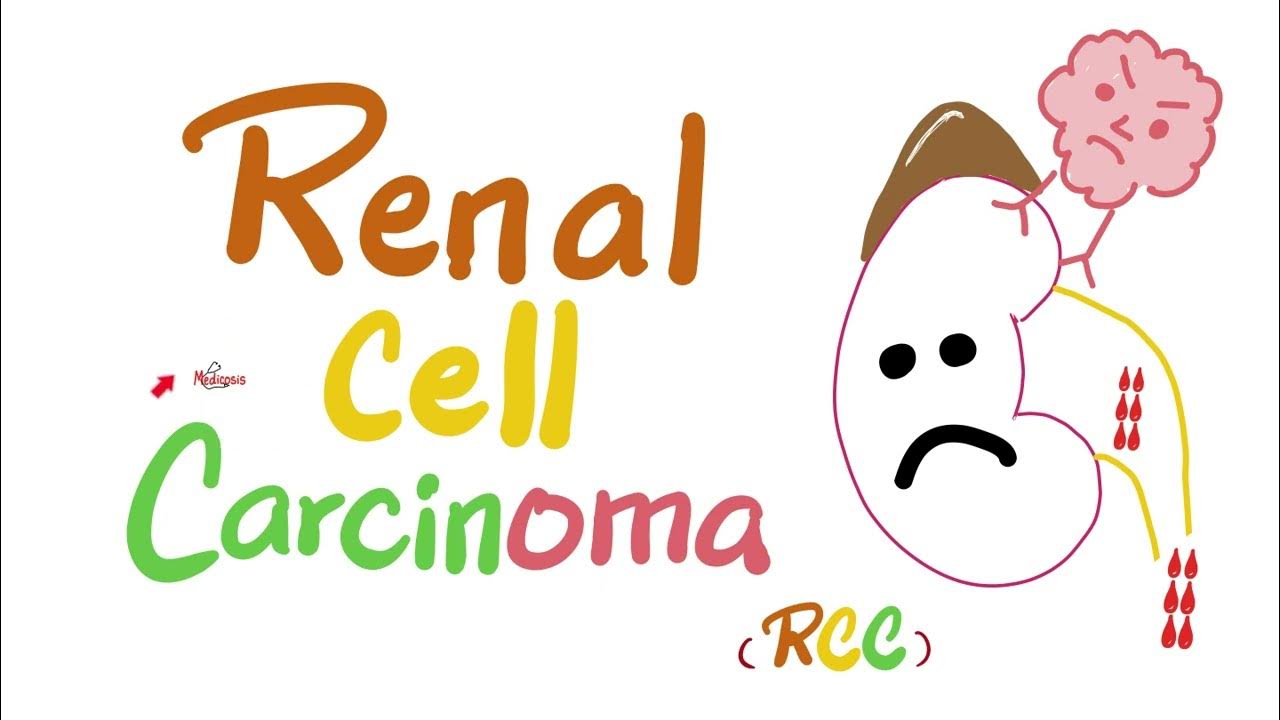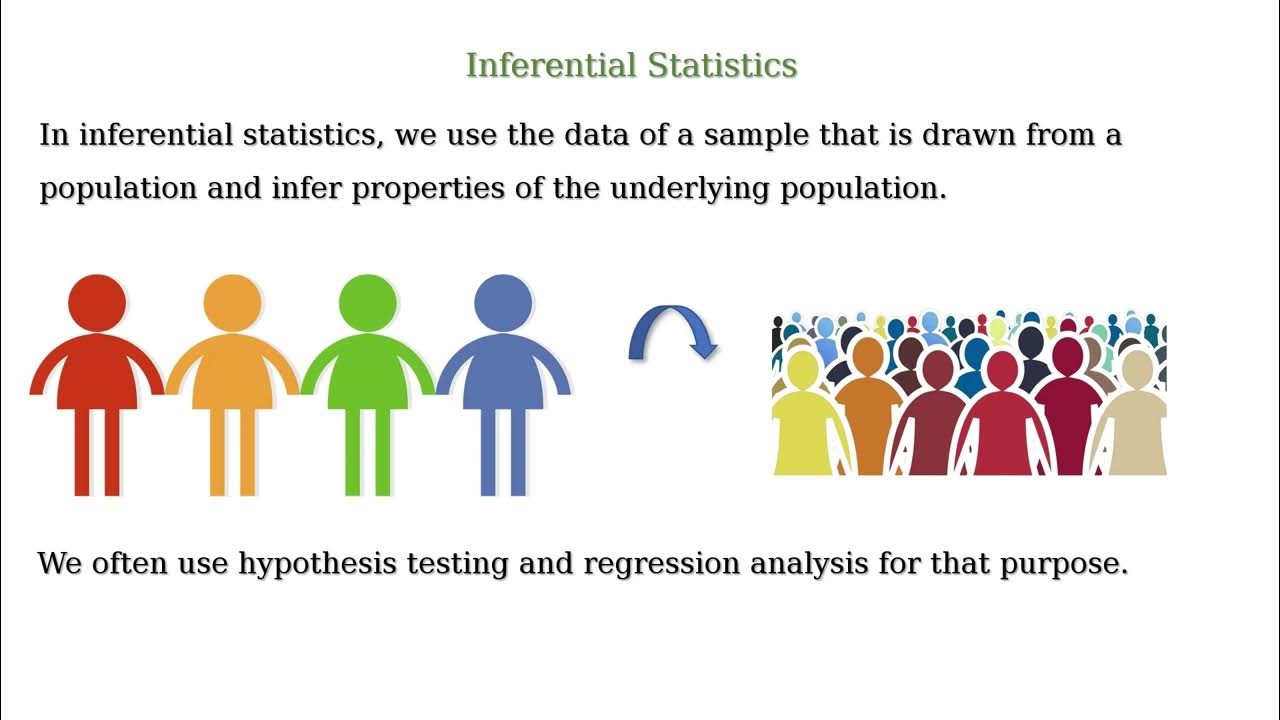Easy survival analysis - simple introduction with an example!
TLDRThis video delves into survival time analysis, a vital statistical method in biostatistics used to determine the impact of various factors on patient survival. It addresses questions like the influence of genetic mutations on breast cancer survival rates and the probability of surviving a certain period post-diagnosis. The video explains how this analysis investigates the time until an event of interest, such as death or relapse, occurs, with a focus on the duration between a start time and an event or censoring. It also introduces concepts like censoring, which accounts for incomplete data due to study limitations or patient dropouts, and touches on common analysis methods like Kaplan-Meier curves, log rank tests, and Cox regression.
Takeaways
- 📈 Survival time analysis is a statistical method used to investigate the time until an event of interest occurs, such as death or relapse in a clinical setting.
- 🔍 It helps to answer questions about the impact of clinical or non-clinical features on patient survival, like comparing survival rates among patients with different gene mutations.
- ⏱ The variable of interest is the time between a start time (e.g., diagnosis) and an end time (e.g., death), which can be measured in various units like days, weeks, months, or years.
- 📊 Survival curves are not only used in clinical contexts but also in non-clinical fields like engineering or social sciences, where they can represent time until a different event occurs.
- 💇 An example given in the script is the 'survival time of a haircut', where the start time is when a client gets a haircut and the end time is when they get their next one.
- 🚫 Censoring is a concept in survival analysis where the event of interest has not occurred by the end of the study or when the observation is lost, which means the total survival time cannot be accurately determined.
- 📚 Censored data occurs when a patient drops out, is lost to follow-up, or the study ends before the event happens, and it's crucial for understanding the limitations of the data.
- 📉 The Kaplan-Meier method is one of the most common methods for conducting survival time analysis, alongside the log-rank test and Cox regression, though these are topics for another discussion.
- 👨⚕️ In a clinical trial, censoring means that the total survival time for a patient cannot be accurately determined, which is important for interpreting the results of survival analysis.
- 🗓 A study has a clear start and end date, and only cases that occur within this period are considered for survival analysis, with others being censored.
- 👍 The video aims to provide a simple and easy-to-understand explanation of survival time analysis, its uses, and common concepts like censoring.
Q & A
What is survival time analysis or time to event analysis?
-Survival time analysis, also known as time to event analysis, is a group of statistical methods used to investigate the time it takes for an event of interest to occur. It helps to answer questions regarding the impact of various factors on patient survival or the time until a specific event happens.
What kind of questions can survival time analysis help answer?
-Survival time analysis can help answer questions such as the impact of clinical or non-clinical features on patient survival, the probability of an individual surviving a certain period after diagnosis, and differences in survival between different groups of patients.
What is an example of an event of interest in a clinical setting?
-In a clinical setting, typical examples of an event of interest are death or time to relapse.
What is the significance of the start time and end time in survival time analysis?
-The start time is the moment when the event of interest begins, such as the moment a patient is diagnosed with a disease. The end time is when the event actually happens, like when the patient dies. The duration between the start time and the event is what is measured in survival time analysis.
Can survival curves be used in non-clinical contexts?
-Yes, survival curves can also be used in non-clinical contexts like engineering or social sciences. They can represent the time until a variety of events, such as time until sneezing for someone allergic to dogs or the time between getting a cast and having it removed.
What is an example of survival time analysis in a non-medical context?
-An example of survival time analysis in a non-medical context could be a hairdresser studying the survival time of a haircut, which is the time between when a client gets a haircut and when they come back for another one.
What is censoring in the context of survival time analysis?
-Censoring refers to the situation where the event of interest has not occurred by the end of the study or when the data collection is stopped. It represents cases where the total survival time cannot be accurately determined.
Why is censoring necessary in survival time analysis?
-Censoring is necessary because a study cannot go on indefinitely. There will be cases where the event of interest has not occurred by the time the study ends, or the patient may have dropped out, been lost to follow-up, or the event has not happened while data was being collected.
What are the three most common methods used in survival time analysis?
-The three most common methods used in survival time analysis are the Kaplan-Meier survival time curves, the log-rank test, and Cox regression.
What does the video suggest for further exploration of survival time analysis?
-The video suggests that further exploration of survival time analysis will cover the Kaplan-Meier survival time curves, the log-rank test, and Cox regression in more detail in a future video.
Outlines
📊 Introduction to Survival Time Analysis
This paragraph introduces the concept of survival time analysis, a statistical method used to investigate the time until a specific event occurs. It is commonly used in biostatistics to answer questions about the impact of various factors on patient survival, such as the effect of gene mutations on breast cancer survival rates or the probability of surviving a certain period after diagnosis. The paragraph also explains that survival time analysis can be applied to non-clinical contexts and that the event of interest does not have to be death. It emphasizes the importance of having a start time and end time for the analysis, and introduces the concept of 'serial time', which is the duration between the start and end times, regardless of specific dates.
🗓 Understanding Censoring in Survival Time Analysis
This paragraph delves into the concept of censoring in survival time analysis. It clarifies that a study has a definite start and end date, and data collection must cease at some point to create the survival analysis curve. Censoring occurs when the event of interest has not occurred within the study period or when the data regarding the event is not available after the study has concluded. The paragraph provides examples of censoring, such as patients who did not return for a second haircut within the study period, or patients in a clinical trial who are lost to follow-up. It also mentions that censoring can happen due to patients dropping out or because the study ends without the event occurring. The paragraph concludes by stating that the three most common methods for conducting survival time analysis are Kaplan-Meier survival curves, the log-rank test, and Cox regression, suggesting that these methods will be discussed in future content.
Mindmap
Keywords
💡Survival Time Analysis
💡Event of Interest
💡Censoring
💡Kaplan-Meier Survival Curve
💡Log-Rank Test
💡Cox Regression
💡Clinical Features
💡Non-Clinical Features
💡Serial Time
💡Survival Curves
Highlights
Survival time analysis is a statistical method used in biostatistics to investigate the time until an event of interest occurs.
It helps to answer questions like the impact of clinical or non-clinical features on patient survival.
Survival time analysis can determine if patients with certain gene mutations have higher or lower survival rates.
It can estimate the probability of an individual surviving a certain period after being diagnosed with a disease.
The analysis can compare survival between different groups of patients, such as those treated with different drugs.
The variable of interest in survival time analysis is the time from a start time to an event occurrence.
Events of interest can be death, time to relapse, or other significant occurrences in a clinical setting.
Survival curves are not limited to clinical contexts; they can also be used in engineering or social sciences.
An example of non-clinical application is studying the time until sneezing when petting a dog for an allergic person.
Survival time analysis focuses on the time between the start time and the event, irrespective of specific dates.
Censoring is used when the event of interest does not occur within the study's timeframe or is unknown.
Censoring can occur due to patients moving away, changing hairdressers, or other reasons unrelated to the event.
In clinical trials, censoring means the total survival time for a patient cannot be accurately determined.
Censoring can happen due to patients dropping out, being lost to follow-up, or surviving until the end of the study.
Three common methods for conducting survival time analysis are Kaplan-Meier survival curves, the log-rank test, and Cox regression.
The video provides a simple and easy-to-understand explanation of survival time analysis and its common concepts like censoring.
Transcripts
Browse More Related Video

Cox Proportional Hazards Regression Survival time analysis

COX REGRESSION and HAZARD RATIOS - easily explained with an example!

How statistics can be misleading - Mark Liddell

Renal Cell Carcinoma (RCC) | Kidney Tumors | Neoplasms | Renal Pathology | Nephrology

MORTALITY RATES and RATIOS - Epidemiology | Lecture 2 - PSM (Community Medicine) MEDVIDSMADESIMPLE

Descriptive Statistics vs. Inferential Statistics
5.0 / 5 (0 votes)
Thanks for rating: